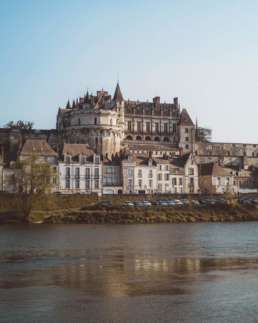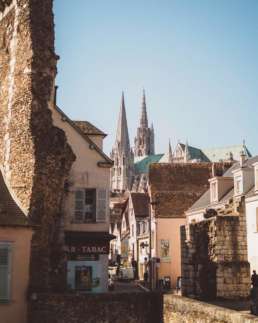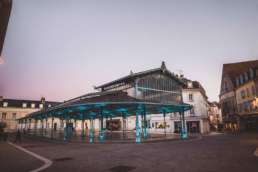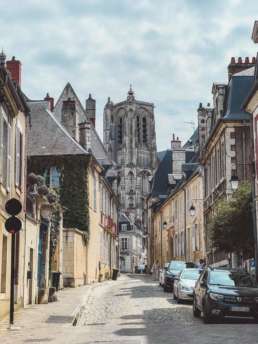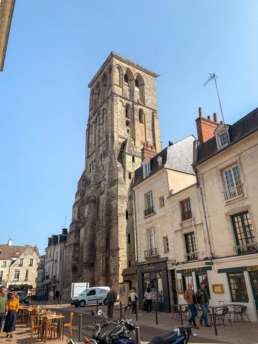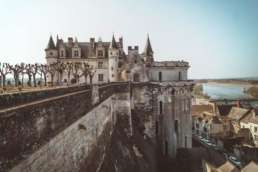
The heartland of northwestern France is aptly named Centre-Val-de-Loire and the region is most associated with vast open farming plains and a temperate climate. But while many think of the area as a primarily food producing region of France, with fields of wheat and corn being the primary choice of growers, there is certainly more than meets the eye in this region.
This includes vast forests, national parks, a surprising gastronomic scene, and many more châteaux than you could hope to visit in one lifetime. Here’s an insider’s guide to the must-see attractions of Centre-Val-de-Loire, as well as some of its lesser-known secrets and hidden gems.
What is the Centre-Val-de-Loire known for?
The region is particularly famous for being home to part of the Loire Valley, which also spans into the Pays de la Loire. The château studded landscape of the Loire Valley lies to the south of Paris and is a must-visit for anyone interested in Renaissance and Medieval French history.
The most famous of the Loire Valley Châteaux are Chambord (which Leonardo da Vinci is rumored to have had a hand in designing), Château de Chenonceau (a fairytale establishment which is surrounded by a moat), and Château de Cheverny (the inspiration for Marlinspike Hall in the Tintin comic books). History buffs should also note that the region boasts not only some of the best cathedrals in France, but in the entirety of Europe.
The capital of the region is Orléans, a historic city that is easily explored on foot thanks to its compact nature and is perhaps most associated with Joan of Arc. Known as Jeanne d’Arc in French, the famous Frenchwoman lived in the 15th-century and led the French army to victory in the Siege of Orléans during the Hundred Year’s War against the English. More visuals of Orléans can be gleaned by watching Murder In…: Orléans, on MHz Choice.
Centre-Val-de-Loire is a relatively new administrative region of France, having only been created in 2015 following the amalgamation of several historic provinces: Touraine, Orléanais, and Berry. The name ‘centre’ should not confuse visitors. Though the area is named for being the center of northwestern France, it is, in fact, not in the center of the country.
Sancerre
Those who prefer the gastronomic side of travel will be delighted to discover the Loire Valley wines. The vines, which grow in the hills surrounding the charming town of Sancerre, reign supreme when it comes to producing quality wine and the tipple is sought out by oenophiles the world over.
The Sauvignon Blanc is a fine white offering and is the crème de la crème of wines from the region. Thanks to its proximity with Burgundy, red wine, a Pinot Noir, is also produced in the area. Medieval Sancerre itself should not be overlooked as a more off the beaten path travel destination to add to your travel itinerary.
Perched atop a hilltop, Sancerre offers breathtaking views of the vineyards which surround it. Within the town itself, attractions include a wine museum (La Maison de Sancerre) and sampling the local produce in one of the many eateries scattered around town.
On the foodie side of things, one of the most coveted cheeses produced around Sancerre is Crottin de Chavignol goat’s cheese. The cheese is eponymously named for the village of Chavignol, a speck of a settlement with just two hundred residents. And while cheese and red wine is typically seen as the perfect marriage, in Sancerre the pairing of choice is goat’s cheese with white wine.
Chartres
One of the most breathtaking cathedrals in France is to be found in the form of Chartres Cathedral, a Gothic masterpiece whose beauty rivals that of Notre Dame of Paris, pre-April of 2019 fire. While the Parisian cathedral is being restored, Chartres’ ecclesiastical building makes for a nice alternative to visit.
The grand Gothic building was largely constructed between 1193 and 1250, though there were, of course, many later additions. Free to visit, visitors should be sure not to miss one of the greatest hidden gems of Chartres that is quite literally lying beneath their feet: the labyrinth of Chartres cathedral.
When entering the cathedral from the Royal portal, the labyrinth is directly in front of you, in the central nave. Created using the stone paving, the 2D labyrinth is unique in that, not only is it one of the largest labyrinths in France (at 13 meters in diameter), but it was thought to have been created during the first half of the 13th-century, though no one is quite sure of its origins.
Look up from the labyrinth and you’ll be amazed by the beautiful jewel tones of the cathedral’s stained-glass windows. Often touted to be one of the most complete sets of medieval glass windows still in existence, particular highlights include a 13th-century window depicting zodiac signs and the amazing blue tones of some of the glass that has come to be known as blue of Chartres.
Close to the cathedral, there is an entire interpretation center dedicated to detailing more about stained glass, the Stained Glass Center. Other highlights of Chartres include strolling around the pedestrian only streets of the historic city center (where timber-framed homes can be spied in abundance) and visiting the Musée des Beaux-Arts (Museum of Fine Arts).
Bourges
Regal Bourges was known in Roman times as Avaricum and is another city in the region whose cathedral also merits a mention. Indeed, the fine Gothic Cathedral is dedicated to Saint Stephen (known in French as Cathédrale Saint-Étienne de Bourges), was built in the Middle Ages, and is of such historic and cultural importance that it has been classed as a UNESCO world heritage site since the 1990s.
Wander in at any given moment, (though be sure to admire the finely carved tympanum- central carving above the main entryway- on your way in) and you’ll soon be rewarded with the sight of painted chapels, rose windows, and the remnants of a carved rood screen.
Directly to the side of the cathedral, the Archbishop’s Garden is a tranquil space that is free to visit and is best seen during the summer months when all of the flowers are in bloom.
Despite its fairly large size (the population hovers around 66,000 residents), Bourges remains somewhat of a hidden gem of the Centre-Val-de-Loire and so you won’t find too many other tourists wandering around the timber-framed buildings and independent shops scattered throughout the largely pedestrianized city center.
Tours
Featured in the Murder In…:Tours episode, beautiful Tours acts as something of a gateway to the Loire Valley thanks to its easy proximity to sought after destinations such as Amboise and Chenonceau.
Despite the number of historic towers in Tours (tour being the French word for tower), the city’s name actually originated from the Latin Civitas Turonorum, which means City of the Turons, a Gallic tribe.
As well as a UNESCO World Heritage listed city center, Tours boasts its very own Gothic cathedral which includes features such as original stained-glass windows and 13th-century carvings. Nearby, the Château de Tours was constructed in the 11th-century and was once home to the Lords of France.
Without a doubt, the best time to visit Tours is during the summer, when an open-air guinguette (a kind of bar close to a river) sets up shop along the River Loire and serves up ice-cold drinks paired with music and fresh food. Whatever the time of the year you visit, ordering food and drinks in the centrally located Place Plumereau while people watching is always a good idea.
Amboise
Amboise is easily recognizable on postcards of the Centre-Val-de-Loire thanks to its romantic château that sits in pride of place, towering above the rest of the town. Just a short drive away from Tours, Amboise boasts several châteaux, links to a particularly famous Italian who I’ll discuss below, as well as other historic buildings of note.
The star of the show is undoubtedly the Château Royal d’Amboise, which was confiscated from its owners by the French monarchy during the 15th-century and can today be visited for a small fee.
The regal gardens are particularly worth strolling through during the warmer months of the year, while the interior gives a glimpse of what life would have been like for French nobility during the Middle Ages.
The historic château gives a wonderful view of the town which sprawls out below and is a maze of cobbled lanes and warm brown rooftops. Within the town itself, the Tour de l’Horloge is a 15th-century clock tower, while the Musee de l’Hôtel de Ville (Museum of the Town Hall) gives a greater insight into the history of Amboise and its surroundings.
On the fringes of town, the Château du Clos Lucé was once home to none other than Leonardo da Vinci and can today be visited for a fee. The magnificent mansion was largely constructed during the 15th-century and was resided in by da Vinci until his death in 1519.
A final note
Royal châteaux, fine cathedrals, and even finer wine: those in search of the good life will soon discover it should they opt to visit Centre-Val-de-Loire. For an even more indulgent look at this beautiful area of France, which is so stunning that it is sometimes referred to as the Garden of France, be sure to stream the following Murder In… episodes.
Episodes featuring Centre-Val-de-Loire on MHz Choice
About the Author
Sophie Nadeau is a British Canadian travel writer currently residing in Paris with her French husband. She has been lucky enough to have lived in several different countries and has run her travel blog, solosophie.com, full time since 2017. With a particular interest in history and culture (especially if there’s a château visit involved), she spends her spare time painting, reading, cooking up vegetarian recipes, spending too much looking up dog photos online, and researching new hidden gems to discover.

